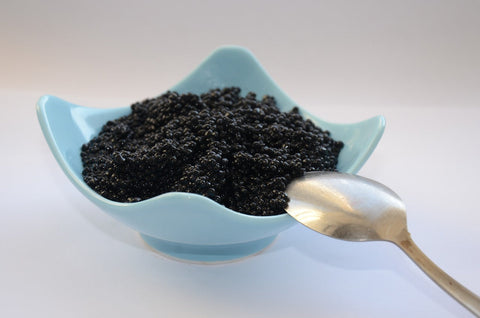If you’ve ever shopped for high-quality caviar, you’ve likely come across the term “Malossol” on packaging or in product descriptions. While it may sound like a specific type of caviar, Malossol is actually a term that refers to the method of caviar preservation and salt content. In Russian, “Malossol” translates to “little salt,” and in the world of caviar, it signifies a delicate balance that enhances rather than overpowers the natural flavors of the roe.
Understanding Malossol Caviar
Historically, salt has been used to preserve caviar, preventing spoilage and extending its shelf life. Before modern refrigeration, heavy salting was necessary, and the result was a highly salted product known as “payusnaya caviar.” However, as advancements in storage and shipping improved, the need for excessive salting diminished, giving rise to Malossol as the gold standard for premium caviar.
Malossol caviar typically contains less than 5% salt—often closer to 3%—allowing the natural flavors of the roe to shine. Unlike older preservation methods that masked the delicate nuances of sturgeon eggs, Malossol preparation highlights their buttery, nutty, and briny notes without overwhelming them. This technique is now synonymous with high-quality caviar, ensuring a refined tasting experience for connoisseurs and newcomers alike.
Is All Caviar Malossol?
Not all caviar is labeled as Malossol, but most high-end caviar naturally falls into this category. Some lower-grade caviar, or roe intended for longer shelf life, may contain higher salt levels, resulting in a firmer texture and a more pronounced saltiness. Additionally, some producers may use different preservation methods, such as pasteurization or borax curing, which impact both taste and texture. However, when you see the term Malossol, it’s a strong indicator that the caviar is fresh and minimally processed.
Why Malossol Matters
For those seeking the best caviar experience, Malossol is an essential factor to consider. The minimal salt content allows the natural oils in the roe to maintain their integrity, resulting in a smooth, luxurious mouthfeel. High-quality caviar—like Osetra, Beluga, or Kaluga—benefits immensely from this method, as their complex flavor profiles remain intact.
Malossol caviar is best enjoyed fresh and should be stored at temperatures just above freezing (28-32°F) to maintain its delicate consistency. Once opened, it should be consumed within a few days to experience its peak freshness.
Malossol: An Authentic Experience
If you’re looking for an authentic, premium caviar experience, Malossol is the way to go. Whether you’re indulging in Beluga’s creamy pearls or the rich, nutty pop of Osetra, choosing Malossol caviar ensures that you’re tasting the roe as it was meant to be enjoyed—pure, fresh, and impeccably balanced. When shopping for caviar, always check for the Malossol label to guarantee that you’re getting a product that meets the highest standards of quality and taste.


